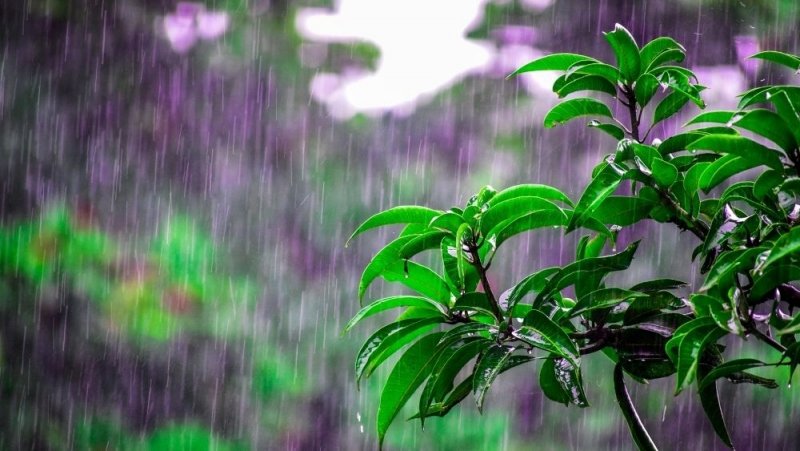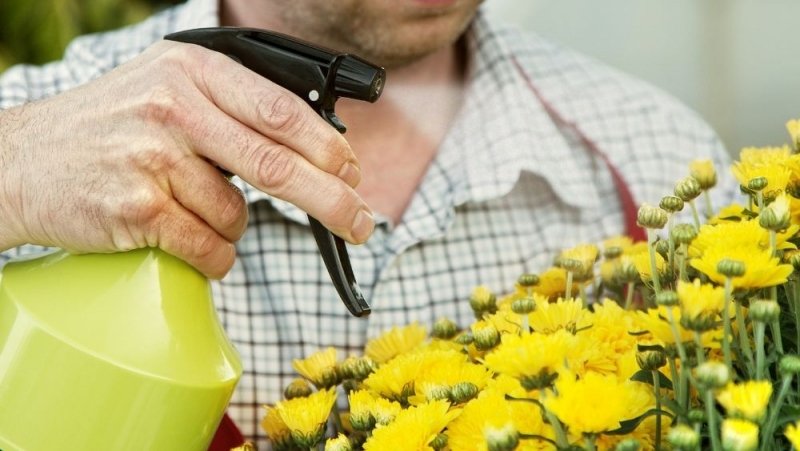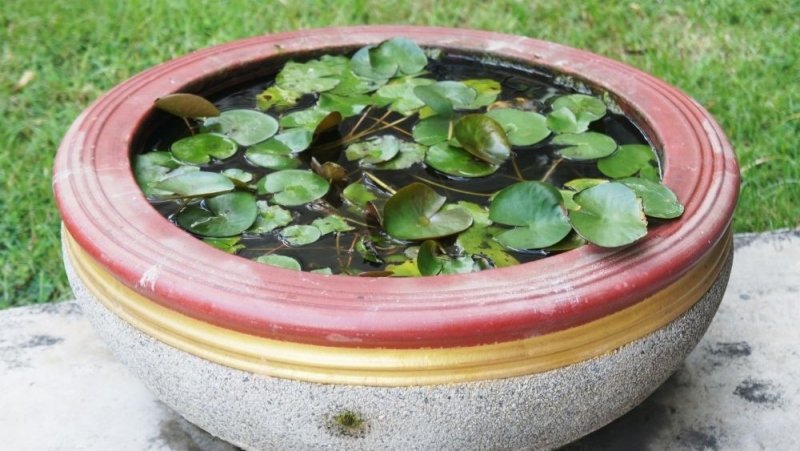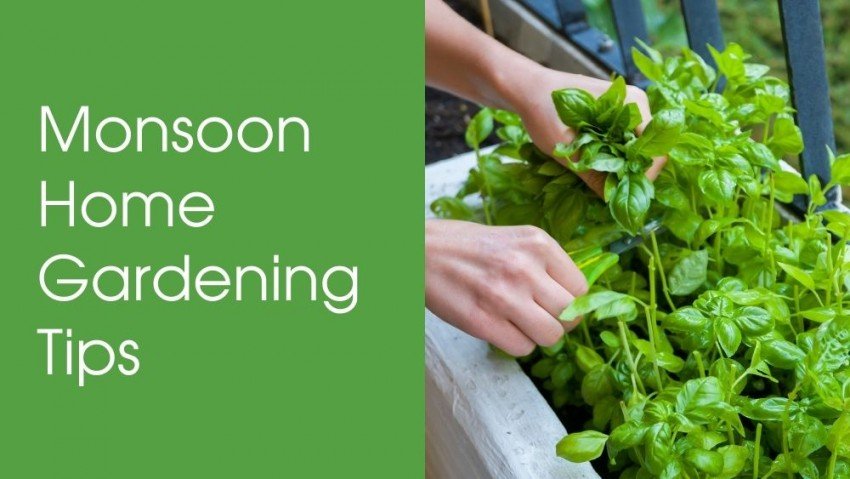Monsoons in India is always the much-awaited season for everyone. The clouds, the rains…. Nothing could be more beautiful than the first rain and the smell of wet mud. With monsoon comes cool breeze, temperature dip, and moist air that predominates the entire surroundings. Monsoon is the ideal time when plants get natural nourishment in the form of rainwater and thus grow and bloom quicker than usual. It is vital to know that nursery men, farm owners, and individuals with house gardens and a love for indoor plants need to take special care of their plants during this season.
Garden plants need adequate amount of moisture, but during monsoons, most people face a lot of challenges. The challenges of gardening during monsoon can include waterlogged plants, leaching of nutrients in the soil, difficulties with pests, and soil erosion. If you do not want to face such challenges and decrease such sort of problems, you must go through the below mentioned gardening tips for the monsoon season in India and understand how to protect your plants during monsoon.
We at Nelda, with the help of this article, would like to present some effective monsoon gardening tips!
1. Harvest rainwater

The ideal way to nurture any garden during the monsoon is via rainwater harvesting. Make sure you do not overwater during this season. Water only when the leaves droop down or the soil is dry. Store the rainwater and use it as sprinklers on plants to freshen them and stimulate proper growth. This helps in the uniform nourishment of all the plants, shrubs, and trees paving the way to a lush, adequately watered, and fresh garden.
2. Trim daily to enable fresh and healthy growth
If your trees have long branches, the heavy winds may blow them away and cause wreckage to the entire garden. Trim the branches of the trees and get rid of dry and dead leaves. Trim the plants either just before the season begins or during the season to boost flower budding and avoid wild growth. Cut off flowers from their stem if they begin to wither, and mow the grass to breathe some life in your lawn. Hedging makes the garden look neat, helps fresh shoots to grow, and enables all plants to stay fresh and nourished.
3. Attach support to the plants
During monsoon winds, plants often break or fall off. Offer support to your plans to withstand the strong monsoon winds. Put a strong stick in the mud and use a rope to attach it to the plant to offer good support.
4. Vermicompost
Our farmer experts have always said that earthworms our farmer’s best friends. Take their benefit during monsoon to advance soil fertility, aeration, and texture.
5. Ensure proper drainage
A difficult problem during monsoons can be of waterlogging if adequate drainage is not maintained or if small puddles form in the garden. Drain out the extra water and make sure that you have a steady drainage system in place. Stagnant water not only inhibits plant growth by rotting its roots but is also the home ground for worms, insects, mosquitoes, and pests, which are harmful to both the garden and one’s health. To prevent this, maintain a garden with pots that have little holes for the accumulated rainwater to pass through.
6. Fertilize enough

Using natural fertilizers in plants by way of manuring, composting, and munching around the plants is healthier and a better method than chemical fertilizers, as necessary nutrients seep through the soil with the rainwater. Compost is absorbed by the plants as soon as it is used since the pores of the plants open up during the rains. Make use of tea bags, eggshells, and other kitchen waste for the process of composting, as this helps to enrich the soil and keep the garden fresh. Mulching is used to apply a layer of nutrients on top of the soil. It helps the plants to get the required nourishment and have healthy growth.
7. Weeding
Just like flowering plants and vegetables, weeds also thrive during monsoons. Weeding before the monsoon arrives helps to prevent the weeds from absorbing vital nutrients from the soil. They intervene with the nourishment and natural growth of the plants. Also, removing weeds when they are young is easier. However, weeding needs to be done daily during monsoon to protect the garden.
8. Make a good choice of plants and offer adequate cover
There are some specific plants that grow best particularly during the rainy season. Some of them are Hibiscus, Dahlias, Cape Jasmine, Marigolds, Gloriosa Lily, Water hyacinth and more. Only those plants must be planted that can adapt to the rough climates and excessive moisture levels of this season. Use perforated sheets as shades to secure the plants that are young or would be able to adapt to the seasonal change. The proper cover also prevents soil erosion during rains and also ensures that rainwater reaches the entire garden space and nourishes it all through.
9. Make use of pesticides

Pests east away all the fresh saplings and young plants or invade upon the nutrients present in the soil. Carefully sprinkle pesticides to kill these pests in time, especially after pruning, as this is the time when fresh shoots appear.
In short, we have additionally listed some Do It Yourself tips that one can easily use while gardening in Monsoons:
- Search for worms in plant beds. Plants are prone to be infected with worms during the monsoons. However, earthworms are good for plants as they dig holes in the soil that helps in aerating the plants and nitrating the soil.
- Make sure that the water is not clogged around the plants. For this, mulch can be spread around the plants as they would prevent rainwater from staying apart and also bring in some extra nutrients.
- Water the plants only after checking the pots/bed. During this season, very less water is required. It is recommended to not water in the evening hours, post 3 pm.
- Make use of perforated sheets in place of plastic sheets to cover plants in the open/terrace garden. This offers a sprinkler watering effect to the garden, making it ideal to keep the plants fresh.
Best Vegetables to grow during the Monsoons!
In India monsoons usually last four months beginning from June to September and make for the best time to grow anything. As there is a significant fall in temperature, the sun is less hot and the rains add to the faster growth of plants. There are a variety of vegetables that love the rainy season and grow magically during this time of the year. Thus, making it very important to pick the right kind of vegetables. Nelda has listed some that you can plant while gardening in the monsoons:
1. Tomatoes
Tomatoes are easy to grow, versatile in the kitchen, and there is nothing better than garden-grown juicy tomatoes. The best time to grow tomatoes during the rainy season in North India is between June to August and South India is July to August. They are sun lovers but need well-drained soil to adapt.
2. Radish
Make use of perforated sheets in place of plastic sheets to cover plants in the open/terrace garden. This offers a sprinkler watering effect to the garden, making it ideal to keep the plants fresh.
3. Cucumber

This simple to grow vegetable loves water and sun and grows in a snap as they receive consistent watering and warmth. It can easily adapt to small spaces because of its climbing abilities. It is ideal for salads and makes a great filling for sandwiches. They are the best choice to grow in the rainy season.
4. Okra
This simple to grow plant is rich in vitamin A and low in calories. It requires a warm and humid climate to grow. The starting of the rainy season in India is the ideal time to grow Okra.
5. Spinach
One of the most loved and highly nutritious vegetables with a plethora of benefits, spinach grows well during the Monsoon season. The only thing to take care of is to keep the soil from getting soggy as it can harm plant growth.
Best Flowers to grow during the Monsoons!
1. Marigold
Displaying a multitude of color palettes ranging from yellow, orange, to red, marigold flowers are the pride of Indian Gardens. Its luscious blooms thrive well in the monsoon and can uplift moods instantly.
2. Balsam
This flower needs damp soil to grow and nothing better than the rains for a humid environment and moisture-rich soil. Its vibrant white or charming pink flowers welcome freshness in the otherwise melancholy and dull weather.
3. Hibiscus
The trumpet-shaped flowers of hibiscus bloom in full love during the rainy season and can be found in diverse colors like peach, red, yellow and attract blooming birds to the garden. They bloom from mid-summer till early monsoon.
4. Lotus

Well, this flower needs no introduction. It is accentuated with broad, green leaves that float on the water surface. The slender airy stalk stands upright in the water on which the lotus unfurls. The petal distribution may be single, multilayer, or even double with petal pinnacles in an overlapping fashion.
5. Cape Jasmine
The stunning fragrance of the white Jasmine is best produced during the monsoon and can be found abundantly. This is sure to fill your entire garden with its bountiful perfume and charming charisma, keeping your garden fresh and healthy.
Monsoon is the best time to experiment with new saplings, new trees, and fresh shrubberies as also with indoor plants and terrace gardens especially for those who live in cramped apartment spaces. The use of pathways and rocky soil can prevent rainwater from flowing away. Leverage this season to plan the layout, kinds of plants and vegetables, and their positioning for the upcoming winter months.
Looking for a partner to help you grow your garden well this Monsoon? Well, you need not see beyond Nelda! Synonymous to champions, Nelda Foundation is an NGO working persistently and faithfully towards preserving the environment, specifically regarding the scarcity of trees. We believe that each one of us needs to take responsibility for the environment and work towards making it a better place to live. If you or your company wants to do a tree plantation in Pune this Monsoon, Nelda can be your best companion.
With our powerful experience and zeal for the initiative, anything can be possible. With our army of volunteers and years of experience, we can work together to make your plantation drive in Pune successful. You can either donate saplings to Nelda to be planted in Pune or join us with your team to run your own tree plantation drive. We also provide tree plantation services throughout Maharashtra where we help companies and organizations do tree plantation. Our aim is to help people plant and grow a billion trees in India in 25 years. Join us to make this world a greener place!

